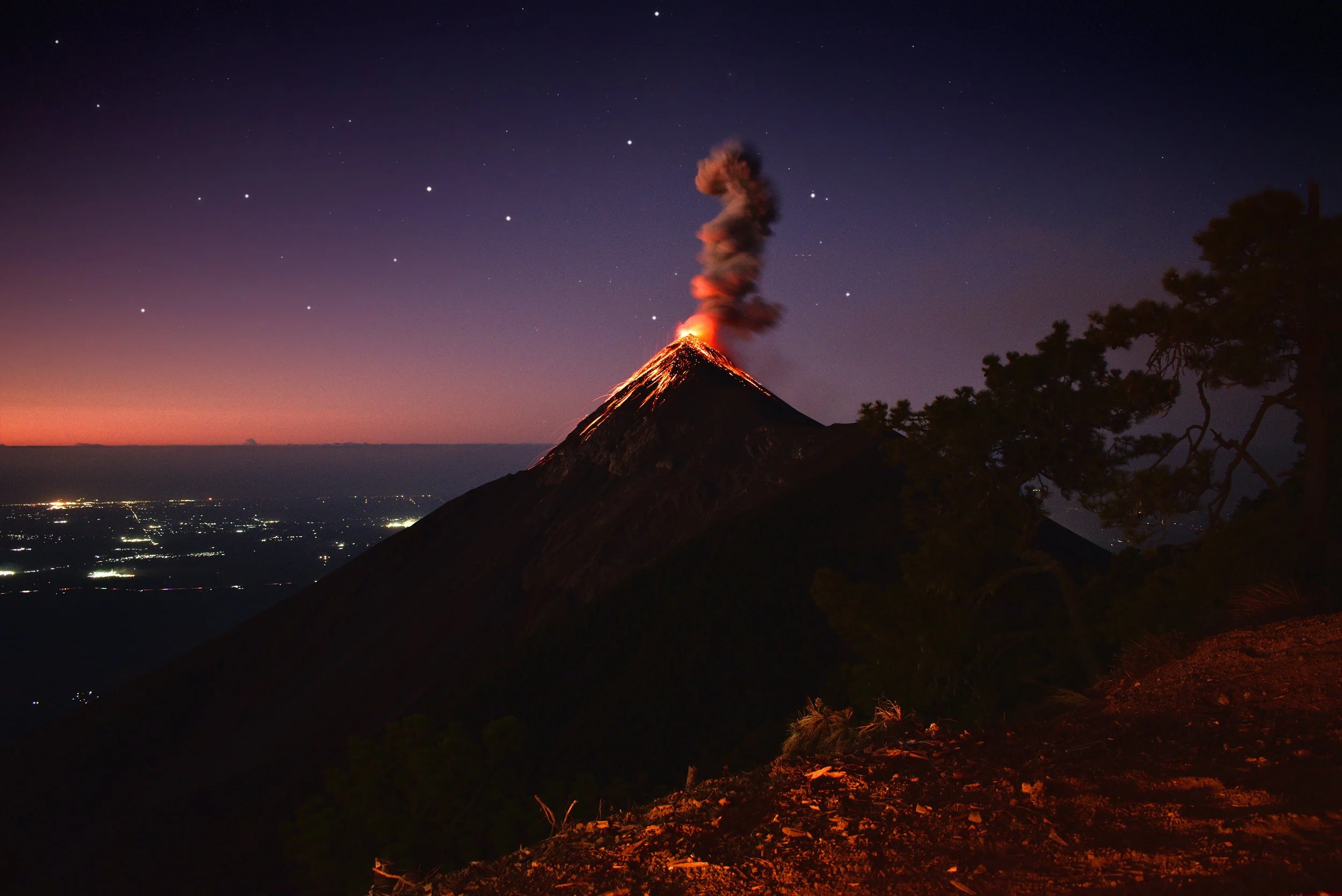Fuego’s Fireworks
Written by: Noah Stainbrook
Ever since I was little, I've been obsessed with severe weather, earthquakes, and volcanoes. I was a textbook science nerd before everyone thought it was cool. And so even though I'm way out of shape and unathletic, it was with extreme excitement that I was now toiling up the steep slopes of Volcàn Acatengango - in Guatemala - in the middle of the night.
I'd already been awake since around 7 o'clock in the morning. I'd help cut and lay cinder blocks all day at the church and then attend a thank-you dinner thrown by the grateful church-goers. At around 8 o'clock, a new friend I'd met earlier in the week drove me to the beginning of the most grueling hike I'd ever been on.
Most people think of the Hawaiian islands when they think of the word "volcano." The Hawaiian islands are what's known as a volcanic "hotspot." This is where one of the Earth's tectonic plates slides over a particularly hot area underneath in the Mantle. Occasionally, this molten rock breaks through and erupts. Over time, the lava cools and hardens and builds a mountain. Eventually, an island is formed. Sooner or later though, the plate moves enough that the volcano dies and no longer erupts. Then, a new volcano will form in the new spot on the plate. Over time, you're left with a string of volcanic islands!
The thing about the Hawaiian volcanoes is they're formed by very runny, basaltic magmas -which is what lava is called before erupting onto the surface of the Earth. The result of this extremely fluid molten rock is a massive "shield" volcano with large, gentle slopes. Unfortunately for me, this is not the type of mountain I was now fighting my way up. Acatengango is a no longer active strato-volcano. Strato volcanoes are created by layers of ash and dust and lava that are blasted out with immense force. These volcanoes are typically created as a result of tectonic subduction. This is where one tectonic plate dips beneath another and pushes steadily down and melts to form magma. Because of the oceanic variety of the plate mixing with the continental crust of the other - and because of the water being inevitably dragged under - these magmas are much richer in gases. They're also much thicker and viscous, because of the goopy nature of magma formed as a result of subduction. These volcanoes are known to have more violent and explosive ejections. These eruptions are also astronomically more dangerous to the surrounding towns and people. It's this type of volcano that buried the famous Italian ghost town of Pompeii.
The terrain was rugged. The trail was a serpentining, loose and gravelly nightmare that seemed to always want to put new obstacles in our way - such as trees branches mud. This was of course compounded by the fact that I'd been horrendously underprepared. I hadn't gone down to Guatemala with the intention of hiking a mountain, so I literally had an old pair of work shoes. Thank God my guides had brought along a climbing pole for me. It also got very cold as we ascended. At first, my friend scared me when I asked how cold it got at base camp. "Below zero," he said nonchalantly. I froze - both figuratively and literally later on. I only had on a zip-up hoodie and flannel. Eventually, I put pajama pants on under my jeans. Sure I was fine during the grueling climb, but I didn't want to freeze at base camp. I quickly calmed though when I remembered that this wasn't the United States. Every other country uses Celsius, so when Angel said "below zero" he only meant about 32 degrees Fahrenheit - which is the freezing point of water.
Splayed out before us were the glowing and slightly greenish lights of the millions of cars people and houses intermingled between many steep hills, mountains, and extinct volcanoes. Low-hanging clouds flowed like a river over Guatemala city - backlit by the lights. The effect was ghostly. At some point before the halfway mark, I asked about a rather intense orange glow on the horizon. My guides informed me that the flow was from a very bright hillside brushfire - something I'd never seen before!
Guatemala City laid out before Volcan Acatenango. Note the bright orange glow of a distant brush fire.
Finally after about six hours of hiking - an extremely slow pace by the way - we made it to base camp. I have no doubt my group could've made it in half the time or maybe even quicker. I however was beyond winded. My heart felt like it would explode and I couldn't seem to catch my breath - which was compounded by the very thin air at that elevation. My group quickly built a small fire, but I was uninterested. I lugged all of my photography and videography gear all the way up there - close to 4 miles all uphill - for a reason. Volcàn Acatengango is part of a volcanic complex known as La Horqueta. Acatengango has been long extinct, but its neighbor - Volcàn de Fuego - is still very much active and even has minor eruptions every 20 minutes or so. This was where my attention was now.
The last half an hour or so of the hike was interrupted by geysers of glowing orange lava being shot into the air. There would be a brief silence as the sound wave reached us, and then a deep rumbling passed through my bones. And now sitting on the steep overlook the angry mountain was in full view ( I think about two miles away) of my sight. I quickly set up my cameras and started shooting. We'd arrived around 3:30 AM Guatemala time, so it was still dark. The sky was peppered with many stars despite the light pollution of the city.
When shooting at night you want to run a long enough exposure to gather enough light for the stars and landscape to show up clearly in the image, but you also want to be wary about the stars and other moving light sources because they trail with increasing noticeability with longer exposure times. With this in mind, I set my exposure to around 3 to 5 seconds for most of my pictures.
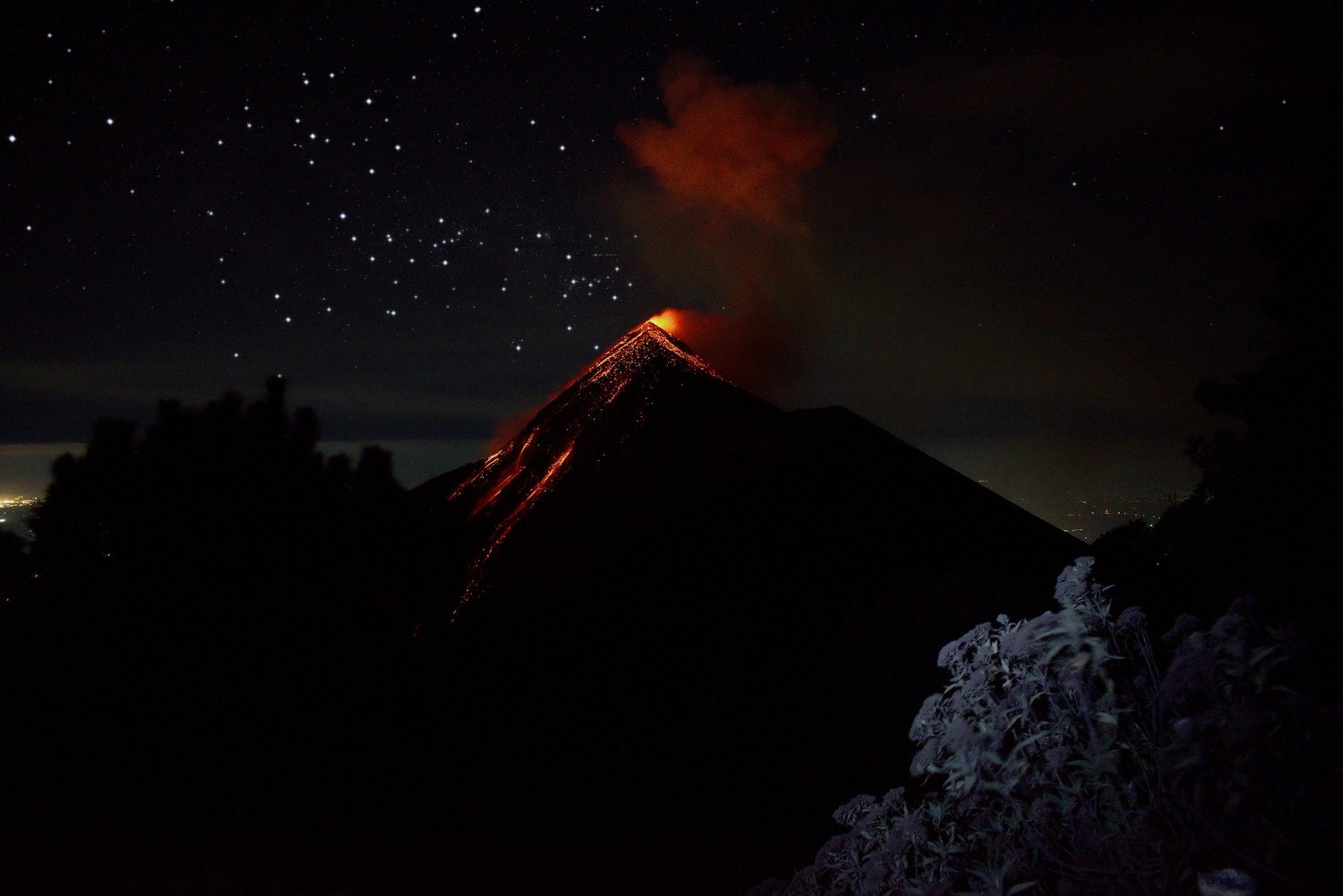
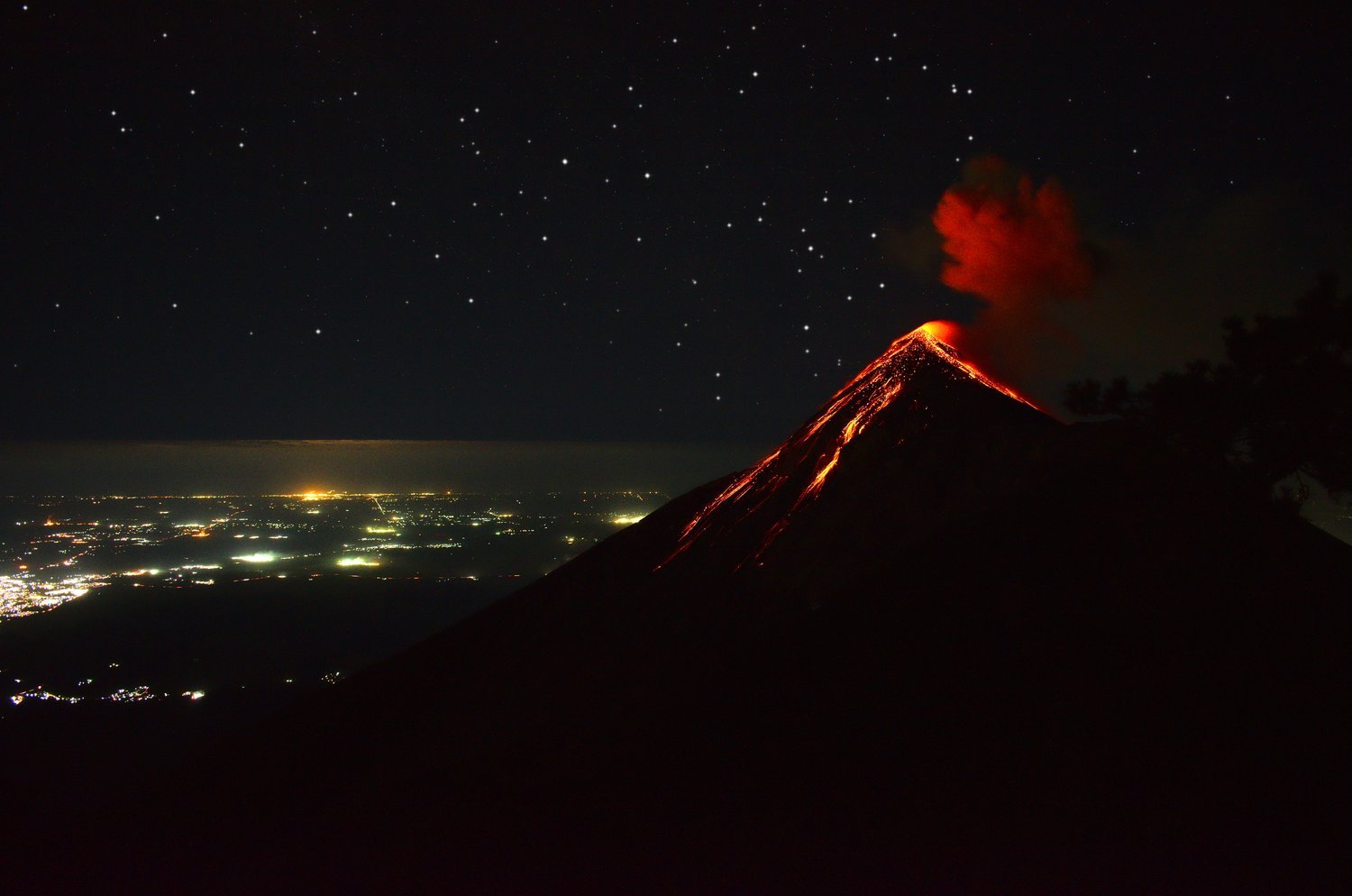
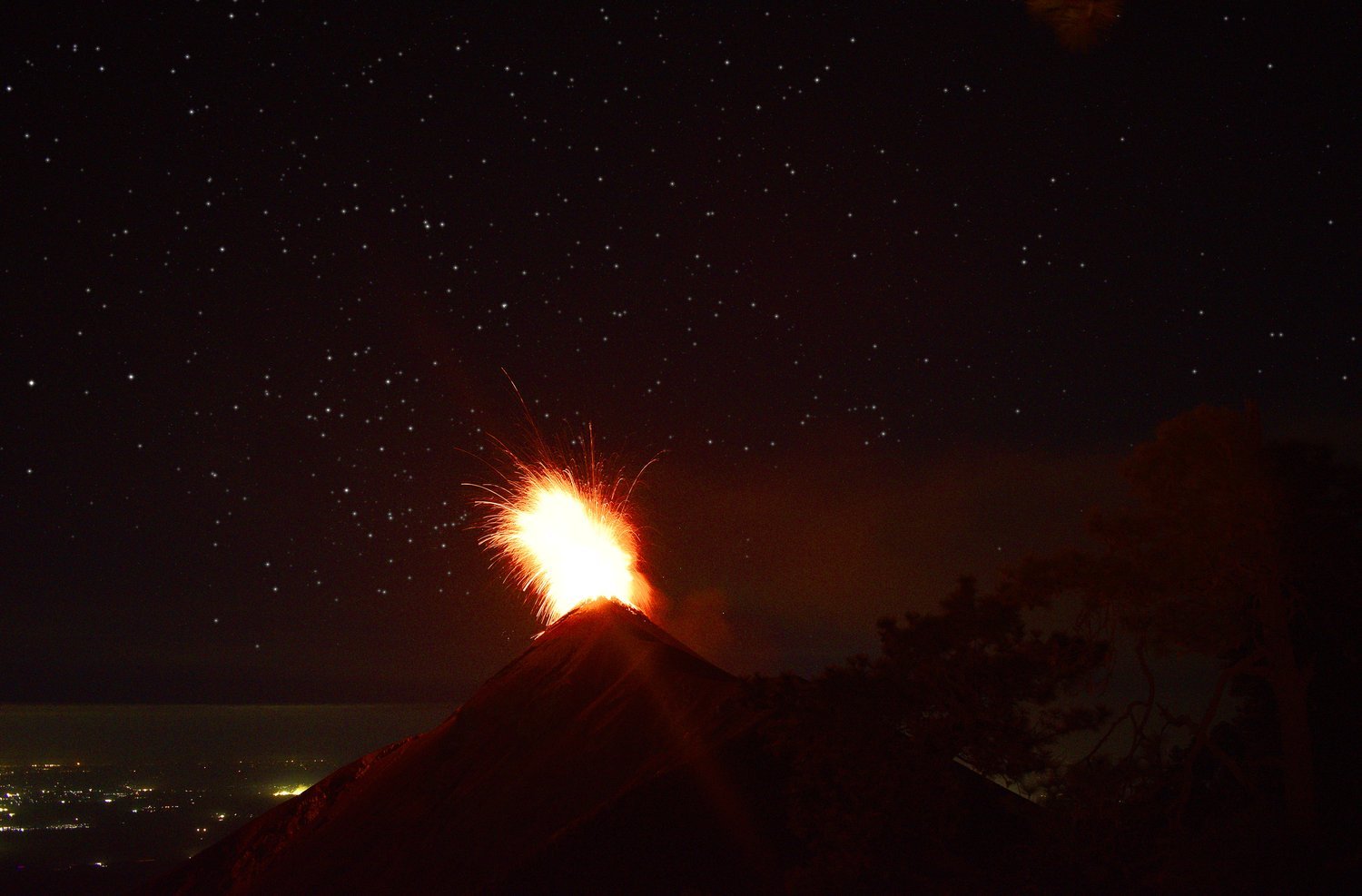
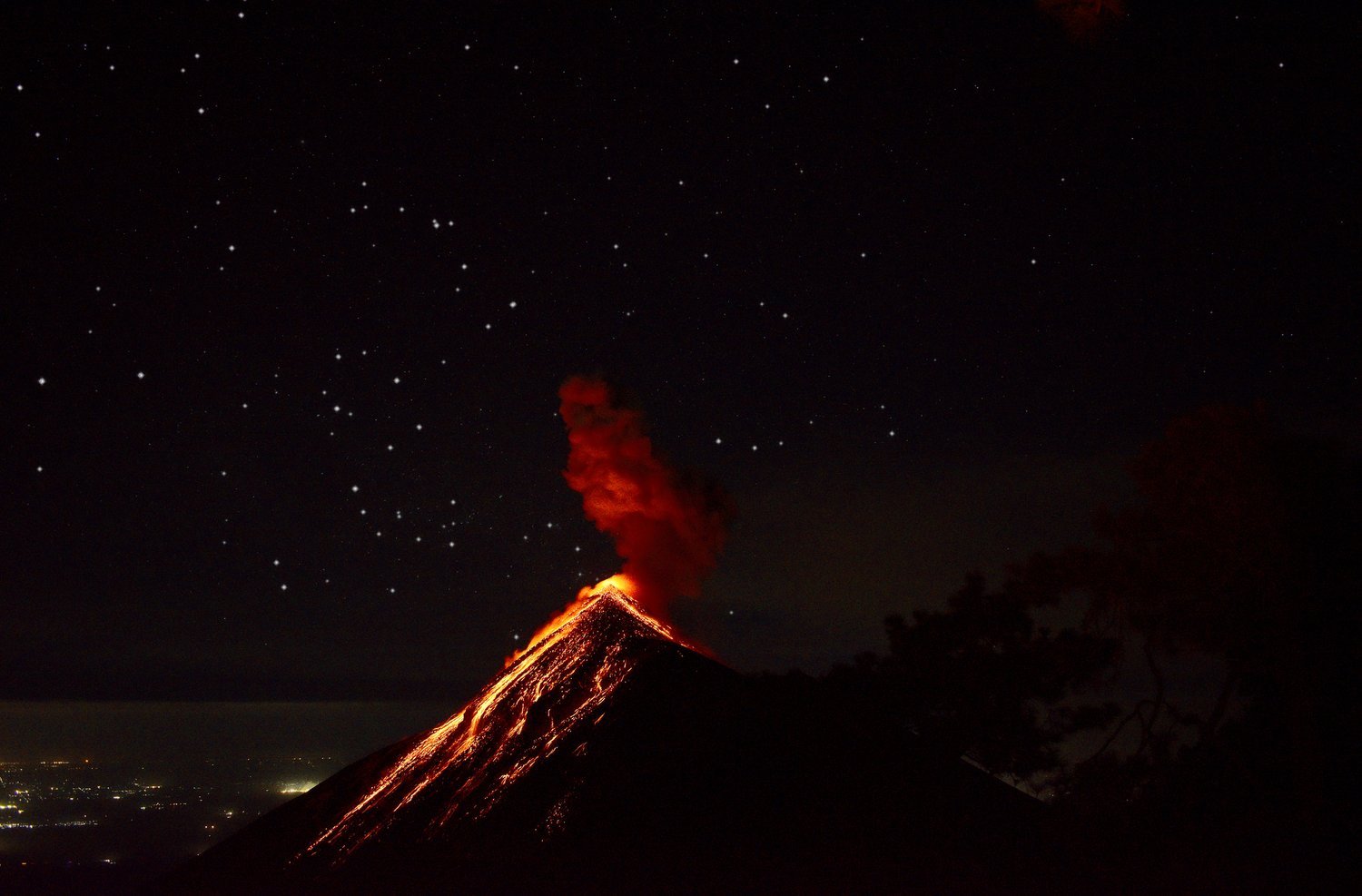
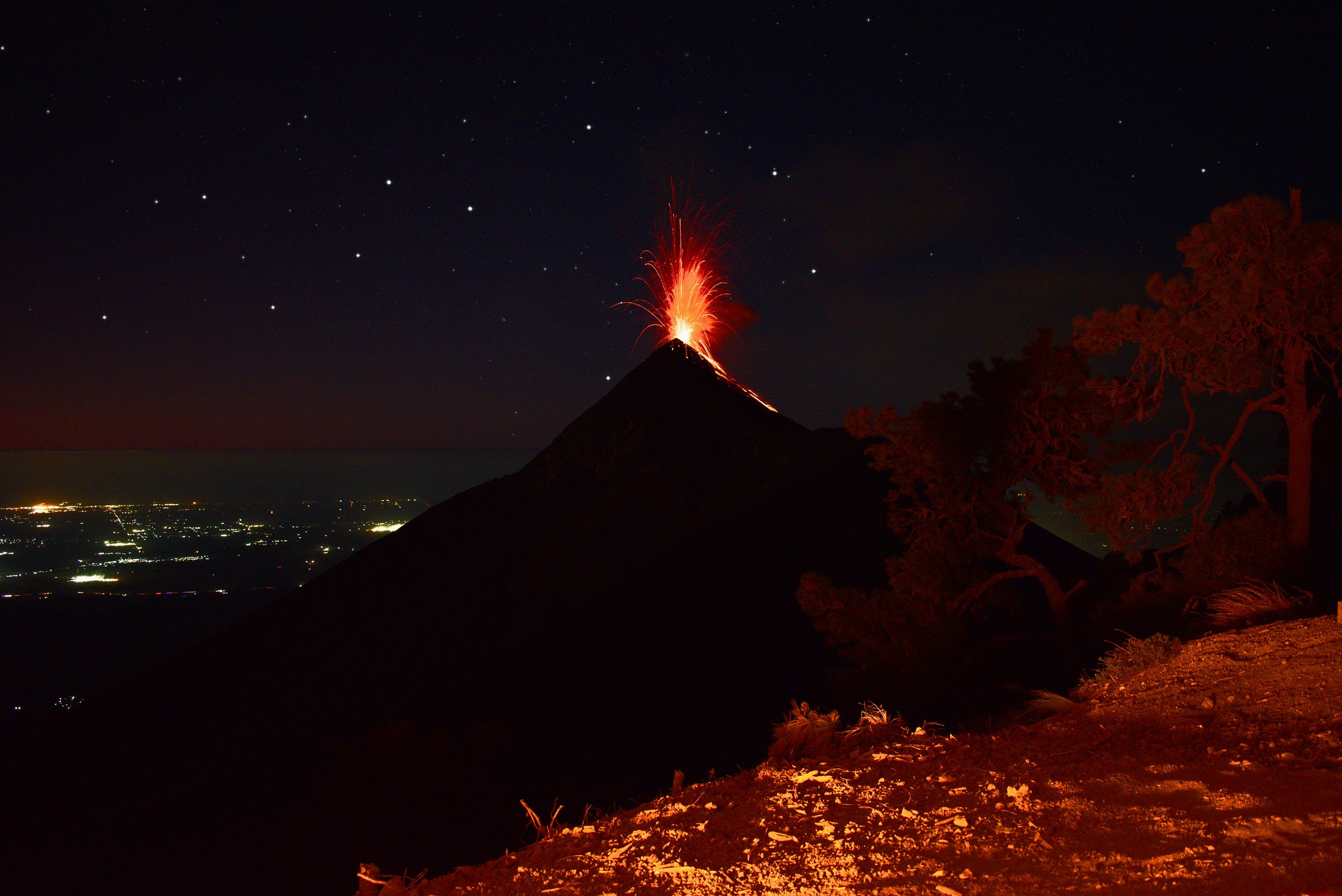
I also videotaped in 4K on my DJI Osmo Action pocket camera. I got extremely lucky. The "Volcano of fire" put on the most spectacular fireworks I've ever seen! I got pictures and videos of incredible glowing fountains of lava. The bright orangish-yellow trails zipped through the sky and tumbled down the steep and barren slopes in an incandescent rockfall, resulting in a glowing blanket bathing the mountainside. If you watch the video below with headphones on, you can almost feel the deep rolling boom pass through your body!
This experience had already been ethereal and otherworldly up until this point. The intense exercise coupled with the thin air and the breathless view of Guatemala city radiating outwardly from the volcano with its burning eruptions had a dream-like quality that I don't really even have the words to describe. I'm not really a very emotional person most of the time, but what I was about to see had me fighting the urge to cry all the way through the trek back to our vehicles in the morning.
At that elevation, you can see the sunrise beginning much earlier - around 4:30 AM. The inky black sky began to stratify into layers of deep darkness lightening to dark blue, to crimson, and then light salmony pink. The effect resulted in what looked like mother nature painting a watercolor before my eyes. The fiery blaze of the still invisible sun was bathed in a dusting of heaven's brighter stars being encrusted into the scene. Of course, we can't forget Fuego. At the perfect moment, a column of ash blasted into the air. The base of the dust cloud was under-lit by the glowing lava shooting out of the crater! This is by far the most incredible thing I've ever seen. I felt more emotional depth here than I did even on my wedding day. I only wish I was able to capture all of the emotions within the picture I managed to snag.
Before long the sun rose above the horizon, and it was time to leave. We had to rush back to the car so I could get tested for COVID-19 with the rest of my mission group as I was flying out the next morning. I'd argue the trip down the mountainside was quite a bit worse than the ascent. I fell hard probably half a dozen times at the least. My legs hurt something awful, and I couldn't believe I was still able to move. And after the COVID test, I ended up going down to Antigua for a day trip and something to eat. It would be the rest of the afternoon before I finally got to bed.
Moral of the story? I firmly believe everyone should see the spectacle of an erupting volcano at least once in their lives. It's almost hypnotic and beyond worth the effort, and I for one cannot wait to experience this again.


